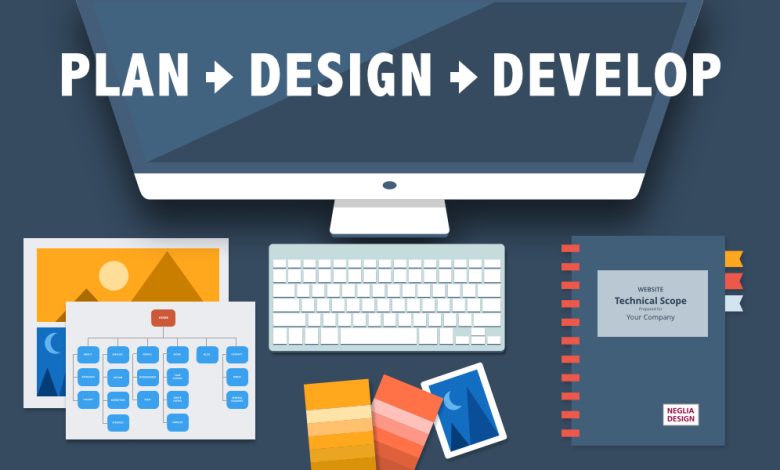
Web application development requires knowledge and skills in different areas. For example, understanding the different programming languages is essential for web application development. In this article, we will discuss some of the common programming languages used in web applications. You will also learn about some of the basic coding guidelines, as well as the various types of Mockups and Prototypes used in web application development.
AngularJS
AngularJS is an open source web development framework that allows developers to develop single page applications quickly and easily. This framework also provides developers with an intuitive user interface.
Aside from its MVC model, Angular also provides features such as two way data binding, form validation, and routing. These features allow developers to work with fewer lines of code. They also help to improve the overall performance of your web application.
The two way data binding feature also provides more flexibility. This feature synchronizes the model and the view. It also eliminates the need for boilerplate code.
Another feature of Angular is the declarative coding paradigm. This coding paradigm uses HTML directives to give developers more control over their work. This feature also allows developers to create custom HTML elements.
Vue JS
Compared to React, Angular, and other frameworks, Vue is one of the most flexible and customizable options. It can be used to build both desktop applications and mobile apps. It is a good choice for startups aiming to create high-performance web applications.
It is also easy to implement. Vue comes with data binding functionality that allows for a smooth transition between the HTML-based web pages and the back-end database. However, the Vue community is not as large as other frameworks. Unlike Angular, Vue is not supported by large enterprises.
While Vue may not be as well known as React or Angular, it is still a great choice for web application development. It offers a lot of flexibility, including an intuitive interface. It is also extremely lightweight.
Laravel
Choosing a PHP framework is an important part of web application development. A framework must be able to simplify the development process and make it easy to deploy and maintain a web application.
Laravel is a PHP framework that is designed to simplify and accelerate the web application development process. It is an open-source framework that is used to build a variety of applications. It is a free framework that comes with a huge library and documentation. It supports a number of languages and a large developer community.
Laravel is a highly secure framework that can handle large traffic volumes. The framework includes built-in caching mechanisms and authentication features. It also has a message queue system that can facilitate smoother web traffic.
Django
Choosing the right web framework is a crucial decision. The right framework will make your project faster, easier, and less costly. The framework will also help you meet your business goals and objectives more effectively.
Django is a powerful Python-based web framework that streamlines the development process. It can be used to create almost any type of website. It includes all of the essential libraries and components. Django is scalable, fast, and reliable.
Django follows the Don’t Repeat Yourself (DRY) philosophy, which means that you can reuse code without having to write the code again. Django’s design principles also encourage reusability.
Mockups and prototypes
Developing mockups and prototypes for web application development is an important part of the web design process. It allows designers and stakeholders to test ideas and get feedback from users. It also serves as a visual representation of the final product. It can be used to show investors and other stakeholders what the product will look like and provide them with useful feedback.
Prototypes are high-fidelity representations of the final digital product. They simulate user interactions and let users explore content and features. They can also be used to measure customer feedback. They can be interactive, like an actual website, or they can be static, like an image on your computer screen.
Coding guidelines
Developing web applications is a challenge, but with the help of coding guidelines, it becomes easier for developers to produce high-quality code. It also helps in detecting errors early on. It also makes it easy for new developers to understand and maintain the code.
Coding guidelines are concrete rules that help in improving the maintainability and readability of the code. They also help in reducing the complexity of the code. This reduces the cost of development. It also helps in increasing the efficiency of the developers.
Coding guidelines ensure that developers follow the prescribed procedures. They also ensure that developers write clear comments.
Dynamic web applications
Using a dynamic web application, businesses can create applications that can run across different kinds of devices. This will allow employees to access customer data anytime and anywhere they need it.
As a result, the popularity of dynamic web applications is soaring. In fact, this technology will overtake static web applications by 2022, and more businesses are looking into adopting the technology.
Dynamic web applications are built using a combination of client-side programming and server-side technologies. These may include AJAX, databases, and load-time data-driven forms. These types of applications are useful for changing content, functionality, and appearance.
Unlike static web apps, which have no real-time interaction, dynamic web applications respond to user input in real-time. This makes them useful for a variety of different processes, from administrative tasks to social networking. They are also useful for generating reports based on user input.
When a user requests a page, the content is sent to the user’s browser. This is largely driven by software code.




